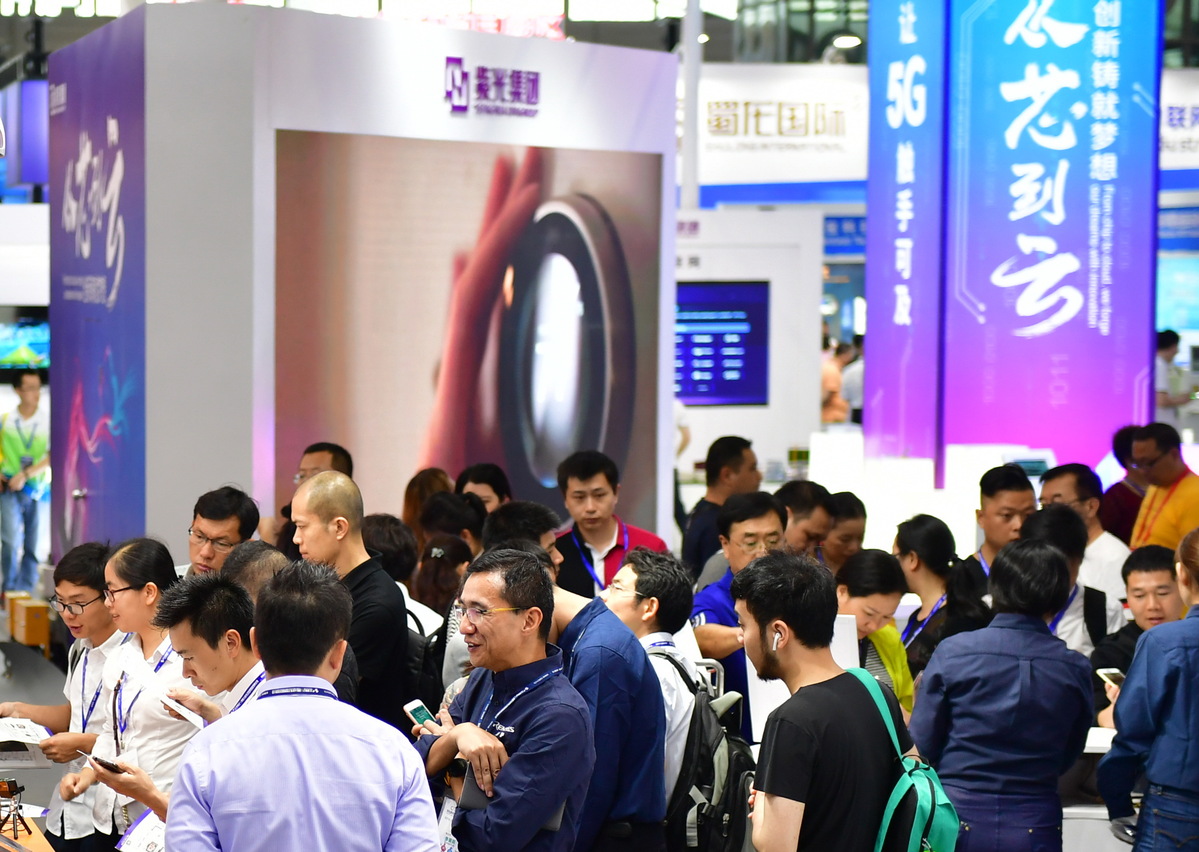Tsinghua Unigroup sees breakthrough in flash memory output
By Ma Si | China Daily | Updated: 2019-09-04 09:18

Chinese chip major Tsinghua Unigroup said it has kicked off volume production of high-end 64-layer flash memory chips, marking a breakthrough in the country's efforts to grow its homegrown semiconductor sector and shorten its technological gap with foreign counterparts, analysts said on Tuesday.
Yangtze Memory Technologies Co Ltd, a chip manufacturer in which Tsinghua Unigroup is a controlling shareholder, said it has started volume production of 64-layer 3D NAND chips, a type of high-end non-volatile memory chip that can store data without using power.
Memory chips are widely used in high-end data storage products on electronic devices such as smartphones, personal computers and data servers. China, despite being one of the world's largest manufacturing powerhouses for electronic devices, relies mostly on foreign companies to obtain high-end flash memory chips.
YMTC said its 64-layer 3D NAND technology is based on the company's in-house developed chip architecture dubbed Xtacking. This is China's first 64-layer 3D NAND product, the company added, which can help reduce the country's reliance on foreign products.
The company did not provide the specific production data. But its plant, located in Wuhan, capital of Hubei province, is expected to produce 100,000 wafers every month, DigiTimes quoted sources familiar with the matter as saying. DigiTimes is a daily newspaper for the semiconductor and electronic industries.
With improvement in the process yields, YMTC is expected to increase its output to 100,000-150,000 wafers on a monthly basis in 2020, DigiTimes reported.
Cheng Weihua, co-chief technology officer at YMTC, said in a statement that the Xtacking chip architecture brings high performance to 3D flash chip, including higher storage density and shorter product manufacturing period.
"With the advent of 5G, artificial intelligence and the ultra-large data center era, demand for flash memory products will continue to grow. The mass production of 64-layer 3D NAND flash memory products will inject new impetus into the healthy development of the global memory market," Cheng added.
In 2018, China spent more than $312 billion on importing chips, $88 billion of which went toward importing flash memory products. The money spent on flash memory products accounted for one fourth of the overall spending and was more than the amount spent on central processing unit and smartphone modem chips, data from General Administration of Customs show.
Wang Yanhui, secretary-general of the Mobile China Alliance, said mass production of 64-layer NAND flash memory products filled the domestic gap in this field, shortened the gap with leading international manufacturers, and laid a solid foundation for the future research and development of domestic flash memory products.
Samsung Electronics Co, the South Korean tech heavyweight, accounts for about 37 percent of the global NAND flash memory chip market, with the Japanese company Toshiba accounting for 21 percent, according to a research note by the New Times Securities.
























